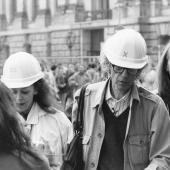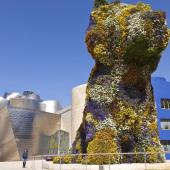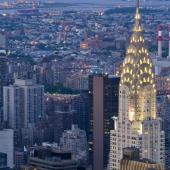Environments & Happenings
Environments and Happenings have their roots in the avant-garde movement of the 50s. It refers to the immediate surrounding of an art object taking involvement and design of indoor and outdoor spaces into consideration. Wassily Kandinsky was a pioneer in this futurist movement.
Starting from the surrealist exhibitions of the 30s in Paris, the issue of positioning and production of art was re-positioned in the room. The pop art movement of the 1960s then seeking contact with the contemporary reality whereat design, architecture, art and everyday culture were linked. It was common in all artworks that they blew up the limits of traditional painting or installation and stepped out of their surfaces. For example, George Segal's white pristine plaster casts of people in room ensembles. The most important exhibition that time was "This is Tomorrow", which was held at the Whitechapel Art Gallery in 1957.
One of the most important representatives of these years is Claes Oldenburg, representing his huge "Soft Sculptures" and “Environments” that somehow were a satire on the American way of life. Andy Warhol with his "Factory" also applies as a major stimulator of Environment.
Environment Art was closely linked to the artistic happening. Claes Oldenburg performed happenings. Here, the everyday reality was to be introduced into the imaginary world of art. Moreover, unreal or absurd elements should mix with reality. For example, Oldenburg opened up "The Store", a store he equipped with manufactured objects (dummies of food, clothes, etc.) in New York in December 1961. These objects could acquire viewers at low prices. Therefore, the happening, which was closely linked to Environment, evolved.
A provocative direction of Environment, whose one of its main representatives is Edward Kienholz, combines social role behaviour, sexual taboos and morals to bizarre contemporary "genre pictures".
From the influences of early Environment and Happening by artists such as Hans Carl Artmann, Konrad Bayer or Hermann Nietsch in Europe a group of artists evolved who developed a pre-style of conceptual art. In "Viennese Actionism“, they performed extremely provocative shows, in which they took sexual excesses as well as the spillage of blood and excrements to have supported the treatment of deadlocks and to liberate fears. In America, from Environment and Happening a neo-Dadaist Fluxus movement emerged around Joseph Beuys and Nam June Paik. They were eager to understand everything in the flow.




